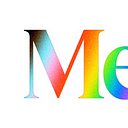Update on Medium’s Paid Collection Experiments
Building and learning
About a year ago, we began hiring people to run some collections for Medium. We deputized them as publishers and editors-in-chief of their own mini-publications on Medium, free to hire and pay (or not) their own writers and run their collections more or less by their own lights. We basically told them to go out and build the biggest audience they could, and we’d pick up the tab.
At any one time we’ve supported about 10-15 commissioned collections, accounting for fewer than 5 percent of the total posts published on the site on any given day.
We had several business goals in this: diversifying the mix of stories on Medium, attracting high quality writers and posts, increasing readership, learning about how the platform really works, and anticipating how publishers might come to adopt it down the road, to name a few. Sustainability was penciled in as well, but, since we weren’t yet seeking revenue, and since we had very little data at that point to make predictions about growth and engagement, the math was purely theoretical. Pay per view seemed like a low-risk way to get started, although we knew we’d probably be tinkering with the compensation scheme as we went along.
Predictably, a few editors excelled at creating attention and building large audiences on Medium under this model, while many more failed to do so.
One thing we learned: Paying for clicks is not automatically a recipe for producing scads of short, thoughtless posts. We picked editors we trusted, and we found, for the most part, they respected the site and reliably delivered high quality writing. We also learned (surprise) that high quality posts do not automatically garner attention and audience commensurate with the effort of producing them. As a result, our payment model failed to support some really terrific contributors.
It’s arguable whether the fault here is in how people were paid, how attention gets divvied up online, the proclivities of the Medium audience at this moment in time, or a question of editorial judgment. It’s probably a mix of all four, and other more subtle things to boot. Regardless, from our perspective it was not the best outcome and we have since made adjustments. For example, some people are now paid not by clicks, but by the total time spent reading in their collection—another experiment that could change as we learn what effects it has on the types of stories it helps produce, and how people find and read them.
From the start, Medium’s mission has been to fix some of the key shortcomings of Internet publishing. We have created a simple, elegant composer that many writers have praised as the best in the world. We are creating a network of socially-connected readers to help stories find the people who’ll most likely want them, which is already creating a measurable uptick in distribution. All of which sets the stage for us to build durable business models, for writers as well as ourselves.
Along each of these paths there are lessons to be learned, and we will make our share of mistakes. We’re a startup, and we move fast. Despite Medium’s beautiful outward appearance, we still try to be scrappy, and few things in the product are completely finished when we launch them. When we’re not satisfied, we iterate. We realize this has an impact on users, and we do our best to get the word out and help people understand the purpose of changes to the site as they happen.
We’re confident there are better publishing business-models out there, including better ways of measuring success — we think total time reading (TTR) is a great start. We want to lead the way in that, and in figuring out how great writers and publishers can be financially stable, and hopefully profitable, on our platform.
As of now, we’re planning several new features and announcements in the coming months, many of them directly informed by our experiments with commissioned collections.
We’ve only just started.

